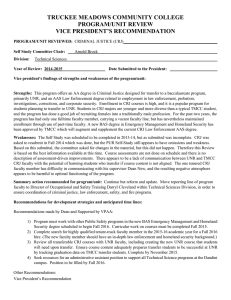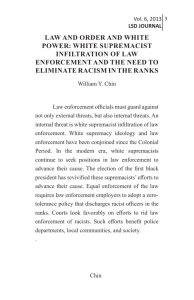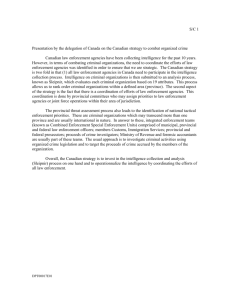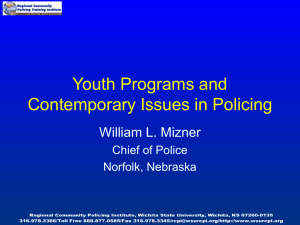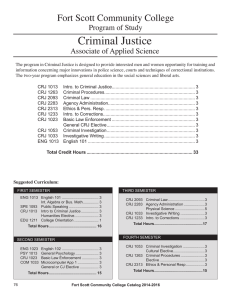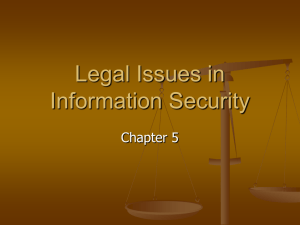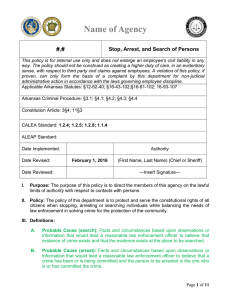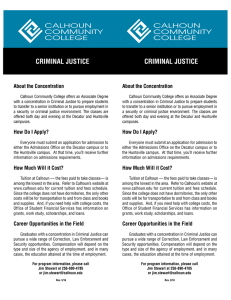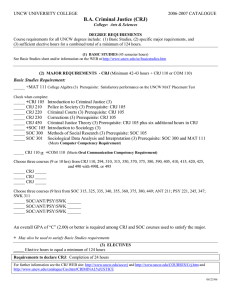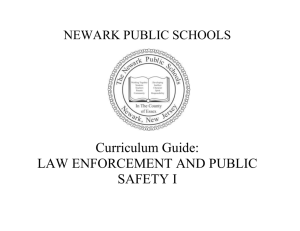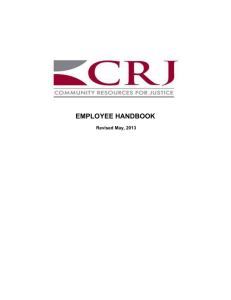CRJ 101 – Lecture Notes – 14 Jan
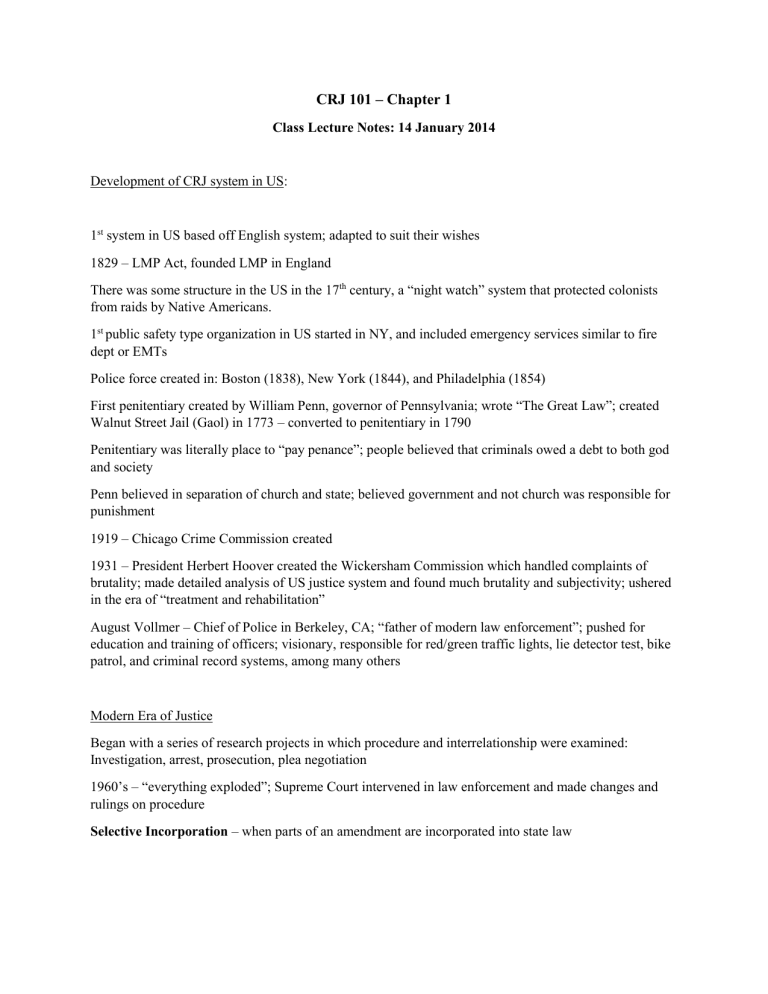
CRJ 101 – Chapter 1
Class Lecture Notes: 14 January 2014
Development of CRJ system in US:
1 st system in US based off English system; adapted to suit their wishes
1829 – LMP Act, founded LMP in England
There was some structure in the US in the 17 th century, a “night watch” system that protected colonists from raids by Native Americans.
1 st public safety type organization in US started in NY, and included emergency services similar to fire dept or EMTs
Police force created in: Boston (1838), New York (1844), and Philadelphia (1854)
First penitentiary created by William Penn, governor of Pennsylvania; wrote “The Great Law”; created
Walnut Street Jail (Gaol) in 1773 – converted to penitentiary in 1790
Penitentiary was literally place to “pay penance”; people believed that criminals owed a debt to both god and society
Penn believed in separation of church and state; believed government and not church was responsible for punishment
1919 – Chicago Crime Commission created
1931 – President Herbert Hoover created the Wickersham Commission which handled complaints of brutality; made detailed analysis of US justice system and found much brutality and subjectivity; ushered in the era of “treatment and rehabilitation”
August Vollmer – Chief of Police in Berkeley, CA; “father of modern law enforcement”; pushed for education and training of officers; visionary, responsible for red/green traffic lights, lie detector test, bike patrol, and criminal record systems, among many others
Modern Era of Justice
Began with a series of research projects in which procedure and interrelationship were examined:
Investigation, arrest, prosecution, plea negotiation
1960’s – “everything exploded”; Supreme Court intervened in law enforcement and made changes and rulings on procedure
Selective Incorporation – when parts of an amendment are incorporated into state law
Federal Involvement in CRJ
1967 – “The Challenge of a Crime in a Free Society” published by Presidential Commission on Law
Enforcement and Administration of Justice; lead to . . .
1968 – Safe Streets and Crime Control Act – generated money through grants for officer training and education or anything to make “safe streets”, funded by Law Enforcement Assistance Administration
(LEAA)
Federal government continues to fund NIJ and BJA
Contemporary CRJ System
Society’s instrument of social control
Task is to prevent or deter outlawed behavior
Law Enforcement: Apprehension – Investigate and arrest
Courts: Adjudicating – Charge, conduct trial, and sentence
Corrections: Sanctioning – punish, monitor, treat, rehabilitate offenders
Costs/Populations:
State/local law enforcement: $215B/year (up 300% since 1982); employs 2M people, 18K agencies with
1M employees (200K part-time or civilian)
Courts: 17K courts, 8K prosecution agencies, 6K correctional agencies, 3500 probate/parole; $100K per cell, $25k/year to house adults, $30K for juveniles
Arrest and court populations: 14M arrests, 1M felony convictions, 1.5M juveniles
Correction population: 7M under some form of corrective supervision – 2M in jails, 5M under probation and parole
States mandate definition of felony and misdemeanor
Order of process:
1.
Crime report
3.
Arrest
5.
Charging Factors
7.
Arraignment
9.
Plea Bargaining
11.
Sentencing/Disposition
13.
Correctional treatment
15.
Post-release
2.
Investigation
4.
Custody
6.
Preliminary hearing/Grand jury
8.
Bail/Detention
10.
12.
14.
Trail/Adjudication
Appeal/Post-Conviction Remedies
Release


